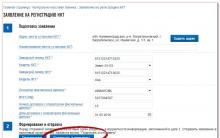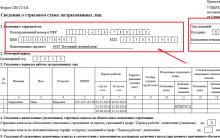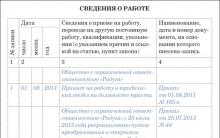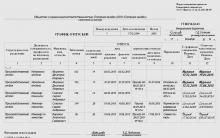Absolutely anyone in life has to learn something from scratch. We are not born with a knowledge of advanced mathematics, quantum physics and taxation. This is for the best, because we ourselves can choose our own path and decide what to put in our brain box.
Here are the 4 main components of a successful entry into the topic of payroll.
1. Study the main regulations on the topic of payroll.
2. Decide what you need to know first in your situation.
3. Adding practical knowledge to legal acts
4. Laying out everything learned
Now let's go over these points in more detail.
1. Study the main regulations on the topic of payroll.
Yes, it's boring. I agree, it's hard. And most likely, you will not understand most of what is written there, if you have not cooked in this topic until now. But this is necessary for several reasons:
1. In your work, you will immediately rely on primary source- IBO, and not on the opinion of your predecessor in the workplace, fellow accountants from other parts of the accounting department, tips from sites with unknown authors, etc.
2. You will immediately learn to form and defend one's opinion, relying on the NPA, both in front of the authorities (who can sometimes come up with wonderful things), and on checks
3. Faced with real work situations, you will roughly know where is this situation written? in the NPA. Not “what” is written (you won’t remember right away anyway), but “where”.
A few words from personal experience, not accounting, but personnel, but the situation is on topic. Once upon a time, when I was 23 years old, my husband, a soldier, and I came to live in a small village where his regiment was stationed. My first higher education - a chemist - fell away automatically. But for half a year of sitting at home, I went crazy and was ready to go out with anyone, if only they would take me. And they were ready to take me as a clerk in the personnel department (there were both military and civilian personnel in the regiment).
One day my husband brought me a reading to study - the Labor Code, which was given by the office manager, my future boss. It was terrible, I read and understood little there. My indignation knew no bounds, I could not understand why I needed it. Is it really impossible to just take words and tell what to do?

But after going to work and having worked in the staff for 3 years, I thanked you hundreds of times for this reading! It is impossible to teach everything in advance and tell about all the situations that may be. But if you know that there is a regulatory legal act where you can get an answer, then the problem is solved in 99% of cases.
Later, my NPA library expanded, and the Labor Code was supplemented by laws regulating the personnel issues of military personnel - “On military duty and military service”, “On the status of military personnel”, “Regulations on the procedure for military service”, etc. These were weighty volumes with detailed comments that I studied from cover to cover.
Later, when I went to study as an accountant, other legal acts, in accounting and taxes, came into play. But now I already knew why I should read them.
So, what are the main legal acts related to payroll and related issues.
Basic legal acts on wages
Labor Code;
Tax Code (chapters 23 "Tax on personal income", 34 "Insurance contributions");
Federal Law of July 24, 1998 No. 125-FZ “On Compulsory Social Insurance against Industrial Accidents and Occupational Diseases”;
Federal Law No. 167-FZ dated December 15, 2001 “On Compulsory Pension Insurance in the Russian Federation”;
Federal Law No. 255-FZ of December 29, 2006 “On Compulsory Social Insurance in Case of Temporary Disability and in Connection with Motherhood”;
Federal Law No. 82-FZ of June 19, 2000 “On the Minimum Wage”;
Decree of the Government of the Russian Federation of December 24, 2007 No. 922 “On the peculiarities of the procedure for calculating the average wage”;
Decree of the Government of the Russian Federation of June 15, 2007 No. 375 “On Approval of the Regulations on the Specifics of the Procedure for Calculating Benefits for Temporary Disability, Pregnancy and Childbirth, and Monthly Childcare Benefits for Citizens Subject to Compulsory Insurance in Case of Temporary Disability and Maternity”;
Decree of the State Statistics Committee of Russia dated 05.01.2004 No. 1 “On approval of unified forms of primary accounting documentation for accounting for labor and its payment”;
Order of the Ministry of Health and Social Development of Russia dated June 29, 2011 No. 624n “On approval of the procedure for issuing sick leave certificates”;
Decree of the Government of the Russian Federation of October 13, 2008 N 749 "On the peculiarities of sending employees on business trips."
All these documents can be found absolutely free of charge in the Internet versions of legal reference systems, for example, Garant or Consultant-plus.
2. Decide what you need to know first in your situation.
It is impossible to know everything. Yes, and it is not necessary. And sometimes it's just bad! Despite the fact that I have a very good command of the topic of payroll, I know some issues superficially, because. in practice did not work with them. Once studied, and then they are still safely forgotten. For example, the summarized accounting of working hours.
It is not necessary to study everything at once, in detail and in detail. Knowing the specifics of the work of your organization or the one where you are going to work, draw up your study plan. Absolutely in any organization there will be a calculation of disability benefits and vacation pay. Salaries will be calculated and paid (the simplest salary), advances will be issued, personal income tax will be withheld and insurance premiums will be charged. This is the bare minimum.
Often management, even in small firms, goes on business trips, this is also useful. It is also worth studying the calculation of benefits for pregnancy and childbirth, for child care. At least for the time being, for general development: not in this company, but in another company, this will be 100% useful.
Of course, you can’t do without reporting, so the mandatory set is: RSV, 4-FSS, 2-NDFL, 6-NDFL, SZV-M, SZV-STAZH. Basic knowledge of personnel is also needed, even if another employee is responsible for your personnel. At least in general terms, know how to hire an employee and fire him.
The rest is up to you. You do not have alimony, foreign workers - do not bother with this yet. No overtime, no night work, no work on weekends - don't study. There are no bonuses - and you don’t need to know how they are taken into account when calculating vacation pay (you’ll go crazy there until you understand).
Large training centers are eager to teach you EVERYTHING AT ONCE, unless of course you count a tidy sum. They pride themselves on their extensive programs that include everything that is possible! You need to be convinced that you still don’t know something, that changes happen every day, and if you don’t go to seminars all the time, then you are not a professional!
I am strongly opposed to you spending months and years studying something that YOU MAY NEVER USE! Learn the basics and you can get started on your own right away. And all the private moments can be mastered if the need arises! Yes, and all options and situations cannot be foreseen in advance.
That is why ours includes the most basic, and therefore suits everyone:
- Fundamentals of personnel accounting
- Vacation
- Benefits
- Payroll
- Insurance premiums
This does not mean that the course is superficial. In it, we study in detail, for example, difficult situations that arise when dismissing, granting leave, calculating benefits (including for pregnancy, from the minimum wage and with a restriction on the minimum wage), judicial practice and recommendations of officials on controversial issues, etc. Even working accountants find something useful there.
But back to our topic. So, you have decided what you need to study. What's next?
3. Adding practical knowledge to legal acts
You are reading NPA. This is where you need to start, so that the right knowledge is immediately formed in your head, and not “something” picked up from dubious sites. In the video lessons of our course, we always at the very beginning say exactly the legal acts on which we will rely.
After NLA, it is very useful to turn your views towards practice and try to calculate something. But how to do this if you have not yet seen a single example?
If you are looking for a way to do it "cheap and cheerful" and the speed of learning is not very important to you, then sit down for books. No, not classic bookkeeping textbooks, God forbid! You need books with practical examples. I like these ones:
- E.V. Vorobyeva "Salary in 2017": withstood many editions, updated every year, many examples, famous author;
- Salary: a practical guide for an accountant, ed. G.Yu. Kasyanova, ABAK publishing house: also reprinted many times, updated, a lot of examples.
These books are more suitable as desktop books for an already working accountant who has questions in the course of work, because. material is given in great detail.
So I repeat - do not read everything! Read only what you have chosen as your study program before. Otherwise, you will get not practice, but porridge. Start with simple situations, do not get into the wilds, analyze examples. Try to write out the conditions of the problem for yourself and calculate them yourself, without looking into the solution, and then compare.
Certainly in real life without knowledge of the program is indispensable. That is why in ours we combine theory with examples, and the solution of a cross-cutting practical problem in the program (1C: Accounting and 1C: ZUP to choose from).
I do not advise studying the program from a book, it is a waste of both money and, more importantly, time. Better visit YouTube and find videos on the topic there. Some videos on wages in 1C: Dina Krasnova has accounting (link to playlist), and look for ZUP yourself, there are a lot of them. Take a look and then try to enter your data into the program and repeat it yourself.
How to tie it all together
The obvious minus of individual practical examples and videos - no relationship between them. Those. studying the payment of salaries, personal income tax and insurance premiums, you will never follow the whole path from the formation of salaries, payroll to its payment and reporting. Therefore, everything you learn will be pieces of the puzzle that need to be put together.
Therefore, here I can advise only 2 options. The first is to invent big cross-cutting task on your own (I was looking for ready-made workshops, but did not find it, so turn on your imagination) and work it all out on paper and in the program. You can copy your working base, add new fictitious examples to it, try new operations for you, see what happens, generate reports and trace how each figure was formed in it.
I sincerely advise - take your work data, a paper form reporting and try to fill it out yourself, without the help of the program. This is the only way to understand the logic of reporting.
The second option is to sign up for us, where not only solve the problem under our guidance, but also check your solution.
4. Laying out everything learned
All the information that you will study must be stored somewhere. It will be of 2 types:
- basic knowledge that you must remember by heart;
- solutions to individual situations that should be at hand.
For the first type of knowledge, I do not advise you to write lectures, just writing down what you are studying in a notebook. It is very difficult to find something in such records, it is difficult to learn (I immediately remember the school, the university and the motivation falls below the baseboard). Therefore, take a regular sketchbook or A4 sheets in landscape orientation and draw mind maps. Like the ones below. Maybe not manually, I often use the free XMind program. It is in this program that the maps that we give ready-made in our courses are made.

Sometimes it doesn’t work out the first time to clearly line everything up, it’s ugly, uneven, etc. Don't worry - redraw. Remember even better. Buy text highlighters, felt-tip pens, colored pens, use them. If you are a strong supporter of linear notes (regular notes), then the recommendation to use highlighting remains. You can draw diagrams, use colored bookmarks. I am a big fan of all this stationery beauty, it improves mood.
Also, for notes, I advise you to use not ordinary notebooks, but notebooks on collapsible rings, in which text blocks are inserted. If you want to supplement what has already been recorded earlier, then simply insert the leaflet in the right place and voila! In such notebooks it is convenient to insert mind maps made by you separately on A4, folding them in half, as well as various printouts from a computer.

In general, there are a lot of opportunities, the main thing is to approach with a soul.
In addition to paper records, you will need a repository for electronic information, such as interesting articles with examples that you come across on the Internet. I have been using this for two years. Evernote and I recommend you. You can copy directly from the browser and it is much more convenient than just copying, pasting text into a Word file and then saving (almost without the possibility of finding this copied on a computer). The program has a very good free version, which is enough for your eyes. You're not going to stuff everything in there, are you? I warned you not to grab everything at once!
The recommendations from this paragraph are universal, suitable not only for the salary section, but also for everyone else. This concludes the instruction on studying payroll. I sincerely wish you good luck in this interesting, but very difficult part of accounting!











How to issue a power of attorney to represent the interests of an LLC to an individual?
How to apply for an IP: step by step instructions
Form of power of attorney to receive goods or material assets
The deadline for registering an individual entrepreneur in the tax
Business plan for a law firm: an example with calculations legal support for a business